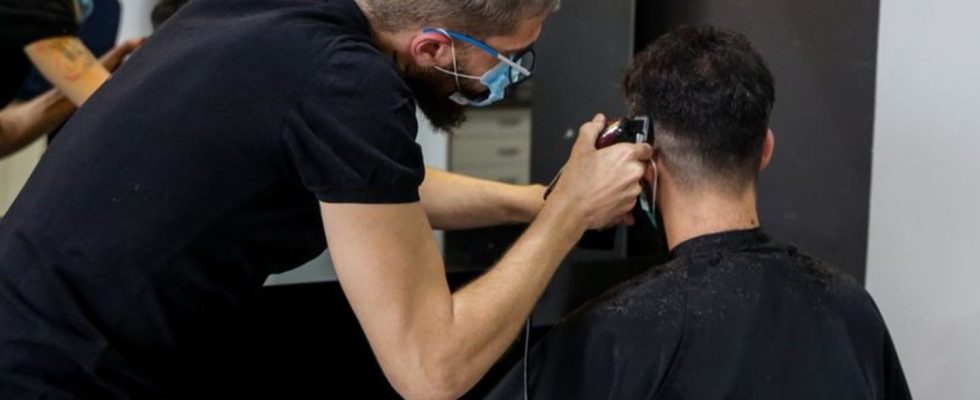Hyped pot cuts, boys with perms: what’s wrong with young men? The Edgar Cut is an example of who can no longer keep up with certain trends and what makes some men tick today.
Not caring about your youth is often a sign that someone is old – at least in your head. This seems to have been the case for thousands of years. Speaking of not having good hair: hairstyles have often been the cause of fueling generational conflicts. Examples: hippies, punks.
In recent weeks, the Edgar Cut – a modern version of the pot cut – has been a media topic and often a hairy affair. He quickly became the target of ridicule. Wow, that’s ugly, say older people – similar to the mullet – and gossip about “Gen Z” (Generation Z; those born since the mid-90s).
A Swiss hairdresser, Cheyne Lewin Hofer, also made Edgar an internet hit in Europe. His clips (wizdomblendz) on Tiktok and Co. are viewed millions of times. German fans also travel specifically to Zuchwil (canton of Solothurn) between Basel and Bern.
What is “clean line-up”?
The before and after videos bring fame to the customers. Many viewers are amused by the technical vocabulary in the clips with terms such as taper fade, hair line and clean line-up. There are a lot of gossip videos and gags. Actions in TV shows such as “ZDF Magazin Royale” with Jan Böhmermann or “Late Night Berlin” with Klaas Heufer-Umlauf were added. “Why did they put the toupee on him the wrong way around?”
The men’s hairstyle “Edgar”: This is longer, wispy hair on top, even a perm, and a hard edge on the bangs – and then very precisely shaved on the sides and back. Piss cut, mushroom hairstyle say evil tongues, experts also say “Hi-Top Fade” or “Box Fade”. At first the cut was probably fashionable in North and South America. The name is said to go back to the baseball player Edgar Martínez, and some also call the 90s rapper Edgar Esteves. But somehow you don’t really know. In any case, the stereotype bearers are Latino boys.
First the pearl necklace, now totally accurate haircuts that you actually have to go to the hairdresser for every few days – and then maybe a perm too?! Are young men looking for the grandma lifestyle and 80s Minipli look?
Wrong questions, says Diane Weis, professor of fashion journalism in Berlin. Almost more bizarre than this appearance is the need people have to make fun of it. “The labeling as ‘ugly’ or ‘grandma’s hairstyle’ – many 18-year-olds simply don’t see it that way because for them these are historically uncontaminated looks.”
Weis explains that there is now a culture in Germany where men meet at the hairdresser (or better: barber) for styling. This is influenced by Turkish and Arabic customs, influences from African-American culture and also from Latinos. “If you want an accurate hairstyle, you go to the barber more often. And that’s also a social event. When men want to be well-groomed and smell good, when they invest time in their appearance and you notice that, then it’s still surprising “Many in Germany, where for a long time it was suspicious if a man cut his toenails.”
In times of Tiktok phenomena, it is typical that some things are incredibly hyped. By the way, the cult of men’s hairstyles doesn’t have to be interpreted as feminization or queer, says Weis. “These are mostly hetero-male self-concepts. Many women have just known for a long time that a visit to the hairdresser can be a mental health tool, so that it’s good to take time for yourself. You get compliments in the circles afterwards, that are important to you, you just feel good.”
Cultural scientist Moritz Ege from the University of Zurich also sees a fundamental change in many boys and younger men: “This commitment to wanting to look good and making an effort to do so is something that has long been seen in many contexts as incompatible with conventional masculinity “But that has changed qualitatively in the last few decades.”
Hair regrowth shows vitality
Ege, professor of popular cultures and empirical cultural studies, sees this as a gradual process since the media figure of the metrosexual in the late 90s and early noughties. Since then, personal care and body modeling have become much more natural for men. “Back then, stylish young men were spoken of with astonishment as ‘metrosexuals’. Straight men would now make themselves lavishly pretty – as supposedly only gay men usually do,” says Ege. “All of this is something that no longer makes sense in the categories of many young people today, simply because this amazement no longer exists.”
Regarding the Edgar hairstyle, Ege says in general: “Head hair always has a certain explosive power because it symbolizes vitality with its constant regrowth and is therefore a symbol of nature and cutting hair then stands for the taming of the natural.” This is a game of nature and culture, a form of self-discipline when you think about the effort that is necessary to style your hair correctly.
And Edgar in particular? “This hairstyle is particularly characterized by the reconciliation of contradictions: extreme edge and fade and then messy hair on top.” In this country too, says Ege, we will get used to the fact that there are more milieu-specific aesthetics and rapidly changing trends in men’s fashion.

